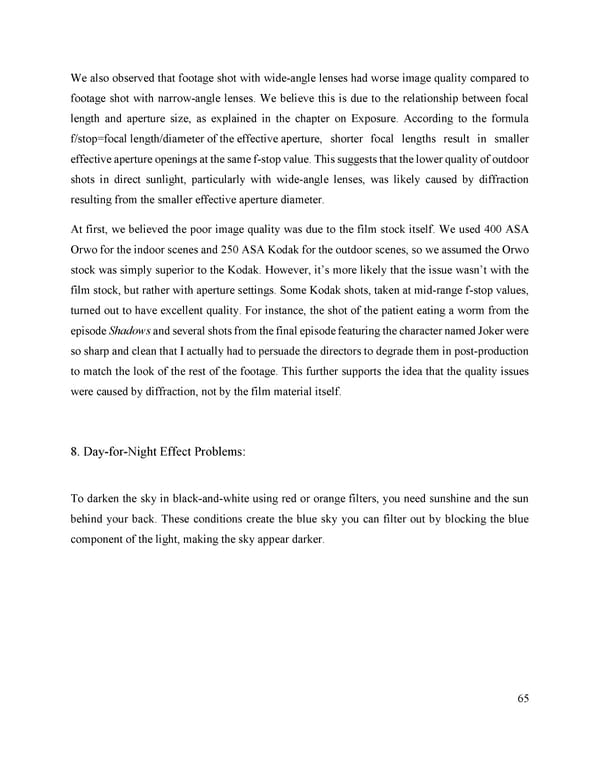We also observed that footage shot with wide-angle lenses had worse image quality compared to footage shot with narrow-angle lenses. We believe this is due to the relationship between focal length and aperture size, as explained in the chapter on Exposure. According to the formula f/stop=focal length/diameter of the effective aperture, shorter focal lengths result in smaller effective aperture openings at the same f-stop value. This suggests that the lower quality of outdoor shots in direct sunlight, particularly with wide-angle lenses, was likely caused by diffraction resulting from the smaller effective aperture diameter. At first, we believed the poor image quality was due to the film stock itself. We used 400 ASA Orwo for the indoor scenes and 250 ASA Kodak for the outdoor scenes, so we assumed the Orwo stock was simply superior to the Kodak. However, it’s more likely that the issue wasn’t with the film stock, but rather with aperture settings. Some Kodak shots, taken at mid-range f-stop values, turned out to have excellent quality. For instance, the shot of the patient eating a worm from the episode Shadows and several shots from the final episode featuring the character named Joker were so sharp and clean that I actually had to persuade the directors to degrade them in post-production to match the look of the rest of the footage. This further supports the idea that the quality issues were caused by diffraction, not by the film material itself. 8. Day-for-Night Effect Problems: To darken the sky in black-and-white using red or orange filters, you need sunshine and the sun behind your back. These conditions create the blue sky you can filter out by blocking the blue component of the light, making the sky appear darker. 65
 Lost Analogue: Exploring Film, Music, and Interdisciplinary Methods in Education Page 65 Page 67
Lost Analogue: Exploring Film, Music, and Interdisciplinary Methods in Education Page 65 Page 67